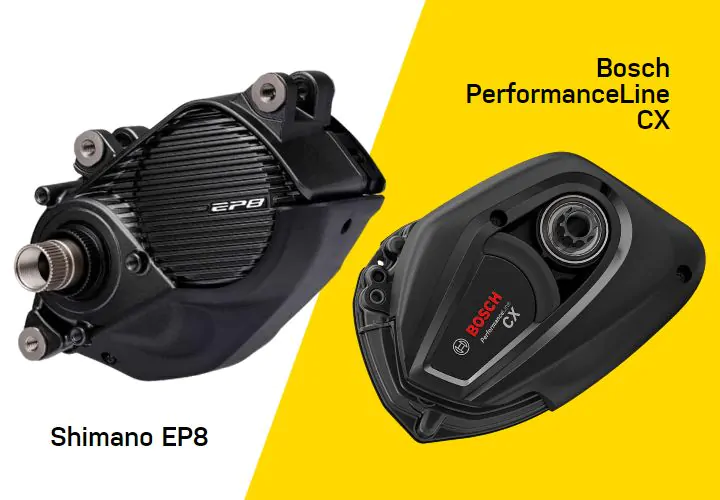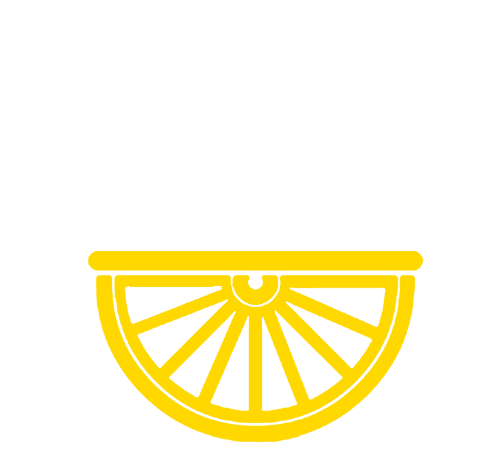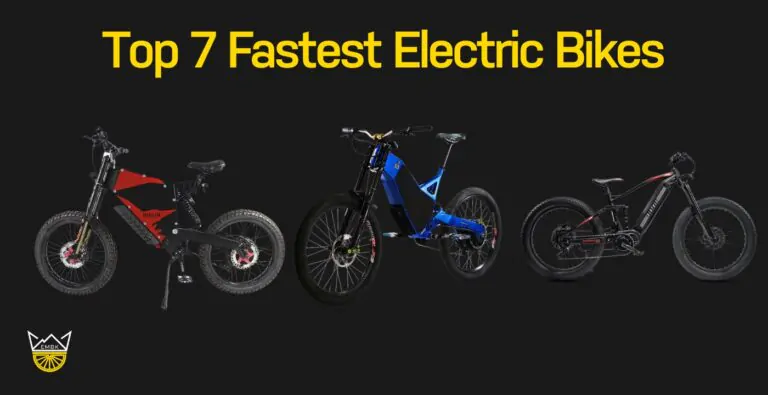Shimano is a company well-versed at making excellent electric bike products. The EP8 motor came out in 2020, with the hope of taking the e-MTB market by storm.
It’s the follow up to the very-accomplished E8000 motor which, although a strong product, needed modernising if Shimano was to keep up with its competitors. But does the Shimano EP8 motor cut the mustard? Or is it still lagging behind the other big players?
In our Shimano EP8 review, we’ll strip it down, look at the numbers and give it a whirl to really get to grips with Shimano’s top e-MTB motor.
Join us for the ride…
Shimano EP8

Key Facts
| Price: | $1,000 |
|---|---|
| Wattage: | 250Wh |
| Power: | 85Nm |
| Top speed: | 25km/h |
| Range: | Inaccurate (50km max on trial) |
| Weight: | 2.6kg |
Peaks:
- Lightweight
- Powerful
- Range
- Handling
Troughs:
- Travel & suspension
- Brakes
- Not made for downhill gnarliness
Motor Type and Build Quality
The EP8 Shimano is a mid-drive motor; this means it’s based at the centre of the bike, by the pedals. It’s kicked into life via a turn of the pedals and then transfers the electric power to the wheels through the drivetrain.
A major advantage of the Shimano EP8 is how compact the build of the motor is – the design allows for a heck of a lot of clearance, making it ideal for hopping over obstacles and through tricky trails.
The compactness of the motor is ideal because it also gives manufacturers the opportunity to use shorter chainstays on their bikes, which is good for manoeuvrability, power and acceleration.
It’s also protected by a sturdy case, which can take a beating without damaging the integrity of the motor – great for the type of punishment you’re likely to be putting your mountain bike through on the trails.
Weight
The Shimano EP8 motor is only 2.6kg, which is really pretty lightweight for a top e-MTB motor. It’s 280g lighter than Shimano’s e8000 e-MTB motor, offering a decent weight saving between the older and newer Shimano models.
That lightweight motor, along with the compact casing, is a real benefit for e-MTB manufacturers. The motor fits seamlessly into the frame, allowing for a sleek finish to an e-MTB build and greater manoeuvrability.
Range and Display
Estimating the range on an e-MTB is always a tricky one; there are a lot of factors to consider, which can impact the amount of range you’ll get out of your Shimano EP8 motor.
How steep the inclines are, how much you use the electrical assistance and the setting you’re riding with all play a part, making it very hard to pinpoint exactly. You get 3 assist modes on the EP8, which you can switch between: Eco, Trail and Boost.
These all offer something a little different; Eco is for conserving your battery and minimal assistance, Trail will give you a hefty punch and Boost is for when you really need it most up those steep hills.
The EP8 is usually paired with a large 630Wh battery, but there’s also a cheaper 504Wh option, too – both of these bring a variety of different ranges.
Is the Shimano EP8 Reliable?
One of the problems with the Shimano ep8 is the reliability of the bike’s range; the display shows the range as 5 bars, rather than as a percentage of your battery’s life.
This is problematic because you never really have an accurate understanding of how much battery you have left and how much you can use the EP8 motor and its electrical assistance.
One minute you’ll feel secure with the amount you have left – then you’ll use the assistance and the next minute it will drop to a very low level, which can leave you in the lurch.
In other words, it’s not ideal at all.
During our rides, we had varying results – 50km is the absolute maximum we managed with anything over 1,000m of climbing. Although that figure all depends on a lot of the factors we mentioned earlier.
Power
Fortunately, what the EP8 lacks in reliability of range, it certainly makes up for in reliability of power. The 250Wh motor kicks out a punchy 85Nm of torque, a welcome 15Nm improvement from the older EP800 motor.
This also puts it around par with some of the other big players in the market. You can reach 85Nm of torque if you’re really going for it in Trail mode, which can be super useful on really tricky trails.
The amount of power is certainly enough to really give you a good kick up the steepest of hills and, when paired with its minimal weight, it’s a real dream to ride on some very challenging terrain. In this sense, it’s absolutely made for the mountains.
How Does it Compare?
Shimano EP8 v Shimano E8000
First and foremost, there’s a slice of good news here. If you were wondering whether you can replace the E8000 motor with the EP8? The answer is, fortunately, yes. Shimano has been smart and used the same mounting system on both motors, so you can make the switch. But is it worth it?
As we mentioned earlier, the EP8 is lighter than the E800 by 280g, it’s also 15Nm more powerful, more compact and efficient. It really is an improvement in every area and a step up for the folk at Shimano, who also claim that the EP8 produces 36% less drag than the E8000, as well as being more heat resistant, so you can push it that little bit harder.

Shimano EP8 v Bosch Performance Line CX

Bosch is another serious player in the e-MTB motor market and their top product is the Performance Line CX. Like the EP8, the Performance Line CX comes in at 250Wh, and can produce the same amount of power at 85Nm of torque.
The Bosch motor can handle a much larger battery than the EP8, though – up to 1,250Wh, which is quite frankly enormous, and that does a heck of a lot for the potential range you can achieve on one charge. By comparison, Shimano only produces a battery up to 630Wh.
That additional range, however, does come with extra weight, with the Bosch motor being 300g heavier. The Bosch also comes with 4 modes to switch between, over the Shimano EP8 motor’s 3.
Bosch’s offering feels a lot more powerful overall, when compared with the Shimano EP8, however the EP8 does feel more natural to ride with. That said, the EP8 also makes more noise than the Bosch, and so our winner?
It’s the Bosch Performance Line CX.
Shimano EP8 v Brose Drive S Mag (Specialized Turbo Full Power System 2.2)
Another serious contender is the Brose Drive S Mag motor, the motor used by Specialized in their top e-MTBs.
Like the EP8, the Brose Drive is a 250Wh motor, but it’s more powerful – with an ability to produce 90Nm of torque – 5Nm more than the EP8, making it slightly more powerful on those chunky inclines.
The Brose Drive weighs 300g more than EP8, though, which is another feather in Shimano’s cap when it comes to the lightweight and compact capabilities of the EP8. The Brose/Specialized motor can be paired with a 700Wh battery, slightly more than the typical 630Wh battery of the Shimano EP8.

The Brose electric support feels very similar to Shimano’s, with a staggered assist to give riding a natural feel at the start of the assistance and as it tapers down at the top limit. This gives both motors a smooth feel to ride with, and overall, the two motors really aren’t too dissimilar.
Final Thoughts
Now listen, the Shimano EP8 motor isn’t perfect and it has its faults. The inaccurate range really is a pain and it can bring a ride to a grinding halt if you can’t ‘guesstimate’ the EP8’s unusual 5-bar battery life display.
The range is what holds this motor back the most and although the motor overall is an improvement on the previous E8000 Shimano model, it does lack slightly compared to some of the other big competitors, such as Bosch.
That said, however, the EP8 is super light-weight, compact and that allows for a really natural feel to your ride. When you do have adequate charge in your battery, the EP8 is very powerful and that means you can fly up the hills and it feels light-weight to manipulate around.
Overall, it’s a good, solid motor, but it isn’t the crème de la crème and there’s certainly room for improvement. Now, go give one a spin for yourself.





